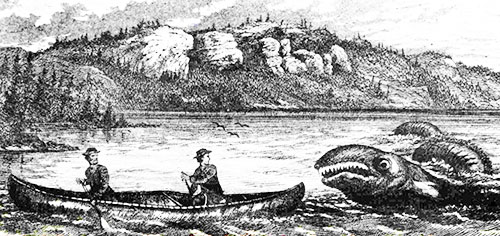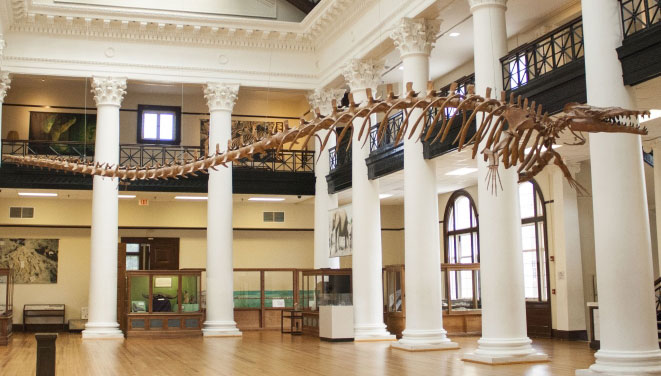A whimsical statue of the legendary Ogopogo sits in Kelowna's waterfront park, a reminder of the legend of the Lake Okanagan "monster".
Bill Steciuk first saw what he believed to be the reclusive inhabitant of Lake Okanagan while he was crossing the bridge from the west side of Okanagan Lake towards Kelowna, where he and about 20 others who had stopped on the bridge, watched a head with three black humps behind it about 50 meters away for what he remembers was close on to a minute before it disappeared below the waves. From that time onward, he has spent many years documenting sightings of the elusive creature. He has been interviewed by several interested parties, from local media such as Global News and Shaw Cable, to international media and more. Bill has received requests for interviews from documentary producers and TV shows from Russia, Japan, the United Kingdom.
THE LEGEND
Centuries of Sightings
As early as the 1700s, the Okanagan native tribes knew of a water beast living in what is today known as Lake Okanagan. They called the creature N’ha-a-itk, meaning "sacred spirit of the waters" and their Native superstitions demanded certain traditions before entering N’ha-a-itk’s domain. One of the traditions was apparently the ritual sacrifice of a small animal as a peace offering before crossing the lake. Tying their horses behind their canoes, they would paddle out to where they believed the serpent lived in a cave beneath the water and make their offering, thus ensuring that their horses would not be dragged under and drowned by the monster.
Early area settlers also reported sightings of N'ha-a-itk and they patrolled the shores to protect their families.
In 1890, Captain Thomas Shorts was steaming on the lake when he saw a finned creature about sixteen feet long with a head like that of a ram. The creature promptly disappeared when he turned his ship in its direction, and virtually no one believed him when he reported it. But other reports soon followed at two or three a year, and people began to examine the lake in more careful detail. The local population fervently believed in the creature’s existence. They called it Ogopogo and named the island, Ogopogo Island, which later officially became known Rattlesnake Island.

WHAT SCIENCE SAYS
Scientific Explanations
Some scientists believe that the Lake Okanagan "resident" must be a form of primitive whale, Basilosaurus cetoides, a prehistoric whale that lived during the Cenozoic era, about 35 million years ago. Basilosaurus cetoides fossils were discovered in the United States and they are the state fossil of Alabama. They were originally thought to be of a giant reptile, hence the suffix "-saurus", Ancient Greek for "lizard" * .The general appearance of Basilosaurus tallies almost exactly with the loglike descriptions of the creature known locally as Ogopogo. The creature is most often described as being one to two feet in diameter with a length of 10 to 20 meters (30 to 60 feet). The head has been described variously as being horse or goat-like. One characteristic often repeated by many of the people who have seen "him" is its resemblance to a log. It is reported to be able to move with astounding speed but many sightings in calm weather have been made of the creature apparently feeding on either fish or aquatic weeds. People who were very close, between 50 and 100 feet, reported seeing fins or feet on the creature.
*Information and images regarding basilosaurus cetoides were found on Encyclopediaofalabama.org
.
